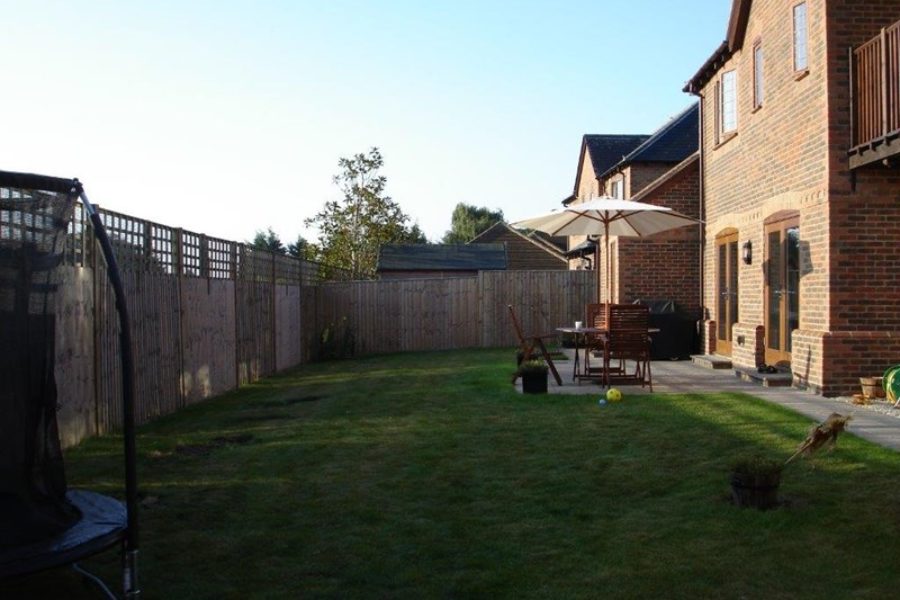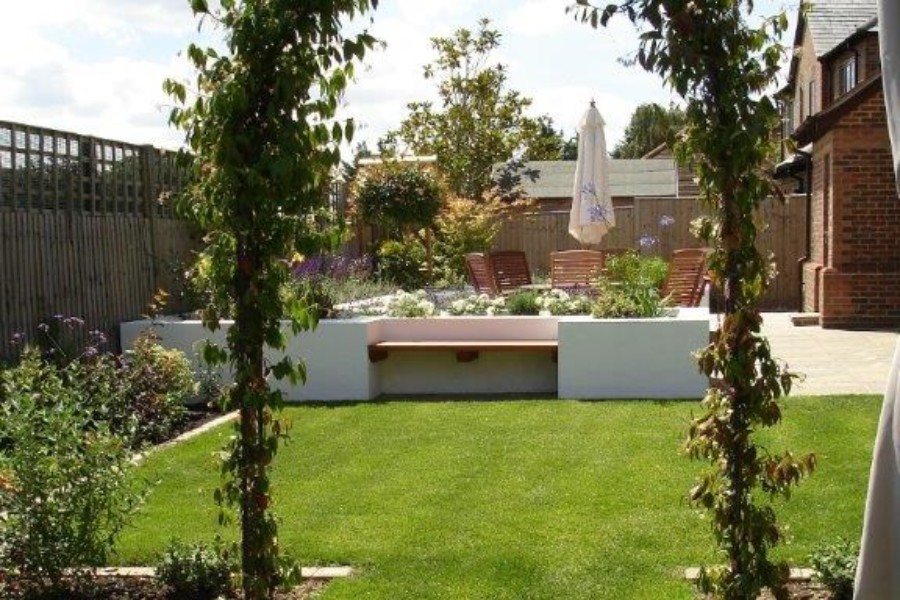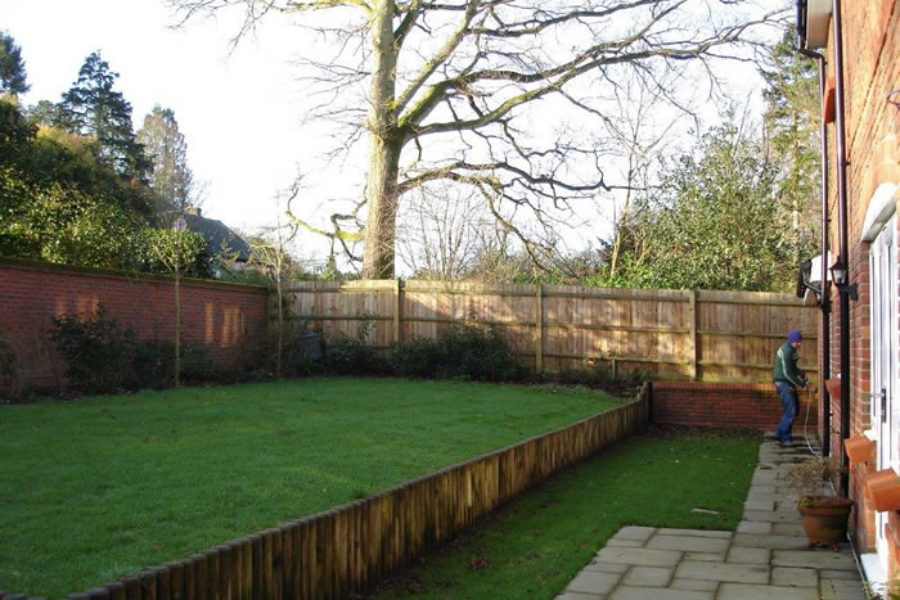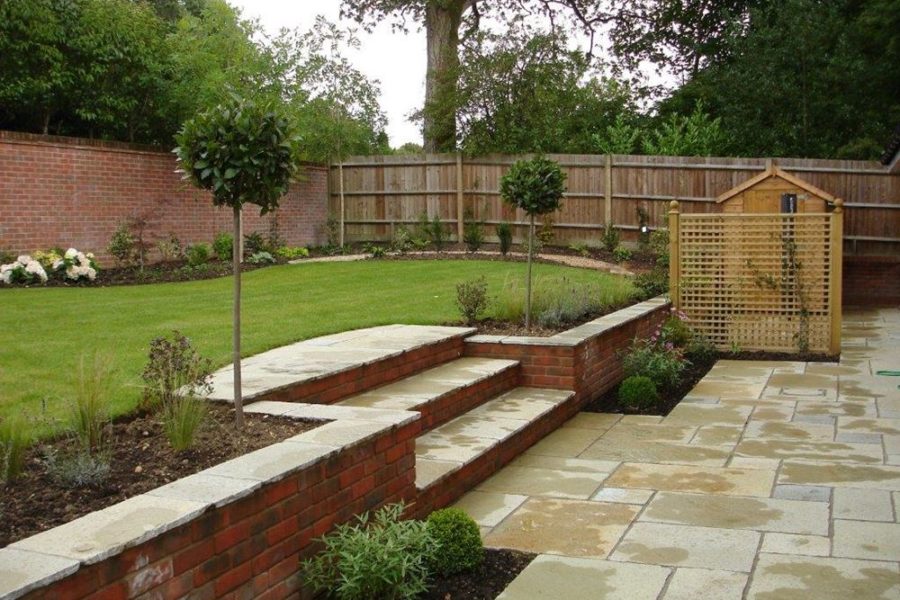How to Cope with Wide Shallow Gardens
If you have a wide and shallow garden it can appear to lack space and distance. But with some design know-how it can be transformed into an interesting garden with a feeling of depth.
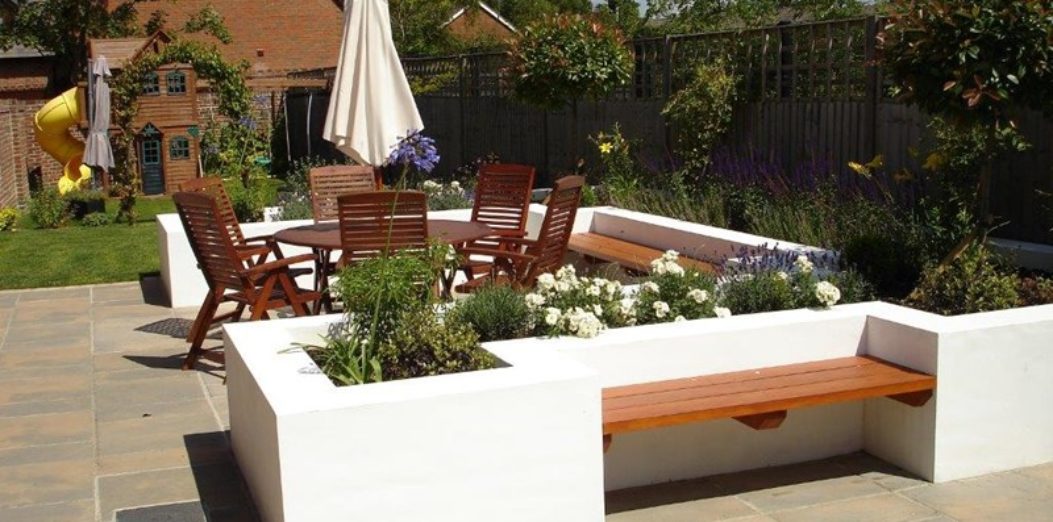
Wide shallow gardens lack depth relative to their width and can appear to lack a sense of space and distance. This problem can be exacerbated in small back gardens with high fences, where the garden can seem like a tiny shallow rectangular box. And in front gardens, the problem can be made worse by the need to partition the garden in order to provide space for parking and a path to the front door.
The opportunity
Whilst a shallow garden can present a challenge, there is also a great design opportunity. If you take a look at these before and after photos, you can see the difference that a good design can make. With a bit of garden design know-how, a wide, shallow garden can be transformed into a beautiful and interesting area with a feeling of depth and space.
Some design tips to make the most of your shallow garden
So how did we do it? Below I’ve listed some of our top garden design tips. These strategies have worked successfully over the years to make the best of our clients gardens, with stunning end results.
Create a strong internal garden structure
- A strong internal garden structure and shaping will direct attention away from the outer boundaries and the closest fences
- Bold but curving / flowing shapes (e.g. for lawns) are particularly effective
- Don’t be afraid to make the shallowest part of the garden even shallower, so that the garden can widen out into the corners – giving even more sense of depth and space
- Or, you might try an alternative approach to the above, emphasizing the shortest (shallowest) part of the garden with a straight path through it. This can give a greater sense of depth, and works particularly well in formal and / or front gardens.
- Another, and slightly unusual approach, in very wide gardens, might be to consider dividing the gardens into rooms, but running across (as opposed to up) the garden (this can be seen in the first example above).
Think about where to locate garden features
- Locating a garden feature or feature area (to accommodate a seat for example) in the far corner(s) of the garden, and shaping the paving or lawn so that it flows out to these features can increase the apparent size of the garden.
Use plants and materials to give a feeling of space or depth
- Materials can play an important role. For example, paler paving can make an area appear larger.
- Choice of plant colours can really affect our perception of depth. Recessive colours like mauves and blues appear further away, and therefore make a garden seem deeper and / or larger than it actually is. In contrast, really bright reds and oranges can have the opposite effect and are best avoided, at least in the furthest reaches of the garden.
Keep it simple
- If nothing else, remember to keep it simple. This is particularly important in very small gardens, where very simple patterns and shapes, done well, normally give the most elegant and effective solution.
If you’re struggling for ideas and need some professional input, please do give us a call or email us (info@aldalandscapes.co.uk).
